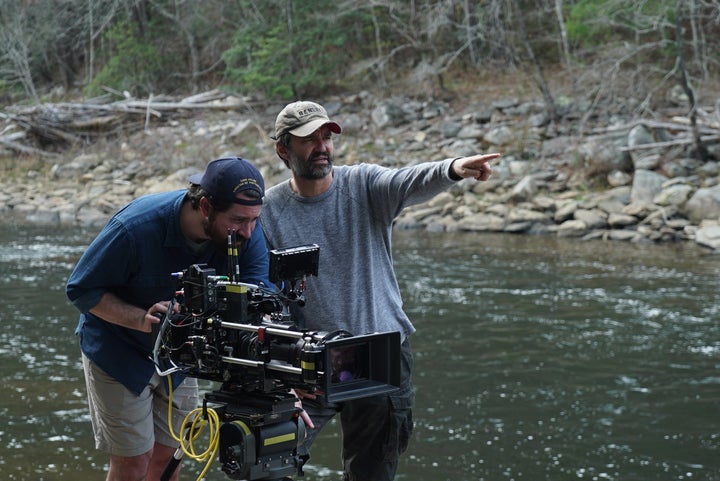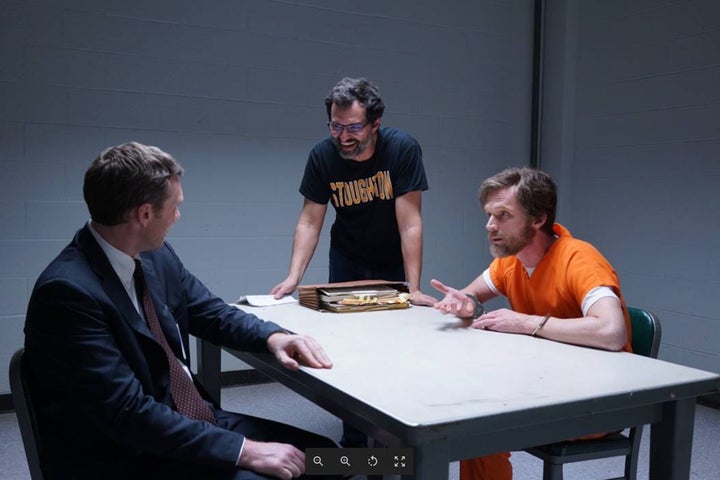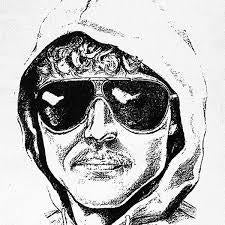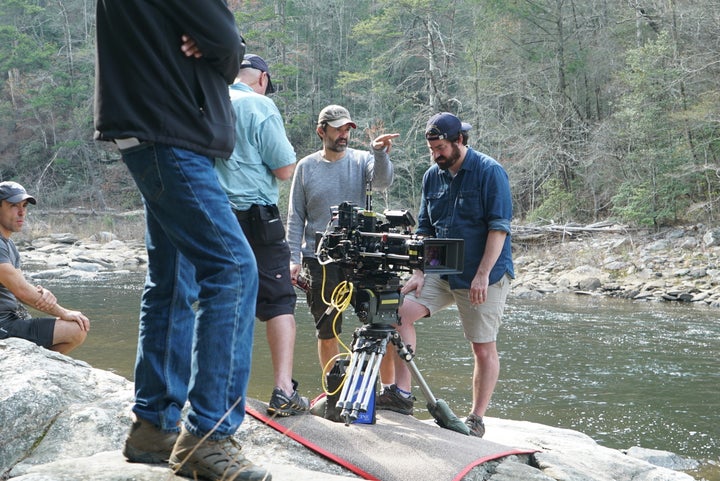The Discovery Channel’s “Unabomber” series promises an explosive ending.
Happily, however, says director Greg Yaitanes, the only thing exploding this time will be information.

Director Greg Yaitanes on location.
“I think viewers will be quite surprised,” says Yaitanes. “They will learn things they didn’t know, especially in the last minute.”
“Manhunt: Unabomber,” Discovery’s eight-week series on the capture of serial killer Ted Kaczynski (played here by Paul Bettany), wraps up Tuesday at 10 p.m. ET.
The series has focused on FBI investigator Jim Fitzgerald (Sam Worthington), whose painstaking analysis of Kaczynski’s writings ultimately led to his capture in 1996.
By then Kaczynski had mailed at least 16 bombs over a 17-year period, killing three recipients and injuring 23 other people. The victims all had some connection with environmental management or technology, which Kaczynski felt was destroying modern society and the planet.
A mathematical genius who entered Harvard at 16 and later became a recluse in a remote Montana cabin, Kaczynski wrote a 40,000-word manifesto titled Industrial Society and Its Future. At one point he offered to stop the bombings if the New York Times or Washington Post would publish it.

Paul Bettany as Ted Kaczynski.
As the real-life story played out, becoming the most expensive investigation in FBI history, most of the public knew about the Unabomber case, and naturally there was considerable publicity after his arrest and eventual agreement to a plea deal that locks him in prison for the rest of his life.
So most people may think they know the story. Not so, says Yaitanes.

The famous real-life Unabomber police sketch.
“We found that most people know three things,” he says. “The manifesto, the police sketch and the cabin. They don’t know the fourth piece of the story, which is Fitzgerald.”
Manhunt, accordingly, has focused on the FBI man, now considered a pioneer in linguistic forensics, but at the time viewed by his superiors as a misguided newcomer who was wasting his time on a dead end.
“Over the last 20 years almost no one has known where to put Fitzgerald in this story,” says Yaitanes. “Others took a lot of credit for his work.”
His superiors in the show include Don Ackerman (Chris Noth) and Jeremy Bobb (Stan Cole), both portrayed as skeptics who tried to force Fitzgerald to pursue their old-school leads instead of his own theories.
Yaitanes cautions, however, that Ackerman and Bobb are not bad guys.
“These are people who did formidable things at the FBI,” says Yaitanes. “Just because they weren’t able to see what Fitz was doing doesn’t mean they weren’t good at their jobs.”
But it was Fitzgerald who got this job done, thanks in large part to the well-publicized help of Kacyznski’s brother David (Mark Duplass), who at the urging of his wife Linda (Katja Herbers) started noting similarities between the manifesto and Ted Kaczynski’s earlier writings.
It sounds like a fairly straightforward case from that point, but the series notes that without a number of investigative nuances and revelations along the way, a smart criminal would never have been corralled.
Yaitanes credits creator Andrew Sodroski with finding the multiple smaller dramas inside the larger story, and he says that as the show went on it became a collaborative effort, with the creative team and the actors all contributing ideas.
“I did an enormous amount of research on the case myself,” says Yaitanes, adding that’s one reason he ended up directing all eight episodes.
“I had learned so much,” he says, “that there was no reason to parachute in another director who didn’t have that background.”
So the viewer won. “Even people who thought they knew the case,” Yaitanes says, “learned something new in every episode.”
One of his own challenges as a director was conveying drama in a story where the main character was often sitting down studying papers, or thinking about them — a scene that’s not inherently very lively.
Yaitanes explains that he and the team brought in new camera equipment that could film those moments in vibrant and unusual ways.
“We wanted to create something very tangible,” he says. “We looked for ways to palpably show people what was happening.”
One regular occurrence was Fitz sitting down in some seemingly neutral situation when suddenly viewers saw a connection click in his brain.
It’s a moment that recalls the late Fox drama House, in which Hugh Laurie’s Gregory House often had that same moment of revelation.
This isn’t a complete surprise, since Yaitanes directed 30 House episodes and readily acknowledges the connection.
“Actually, I’ve seen House in all three of the projects I’ve done since then,” he says. “Banshee, Quarry and now Manhunt. I think I’m drawn to obsessives.”

Location setup.
For the moment, though, he’s awaiting public response to the conclusion of this first Manhunt, which Discovery may expand into an anthology franchise.
“The finale will be surprising because most people don’t know what happened after Ted was arrested,” says Yaitanes. “We only stay in 1997 long enough to show how close he came to walking. What came after this, I think, people will find compelling.”
And not lethal.
